Those were the conditions at Mason Farm Biological Reserve the other morning, a sunrise session with the Immortal (So Far) Mr Bugg. The temperatures had finally been dropping overnight, becoming actually cool, and this produced some fog in low-lying areas.
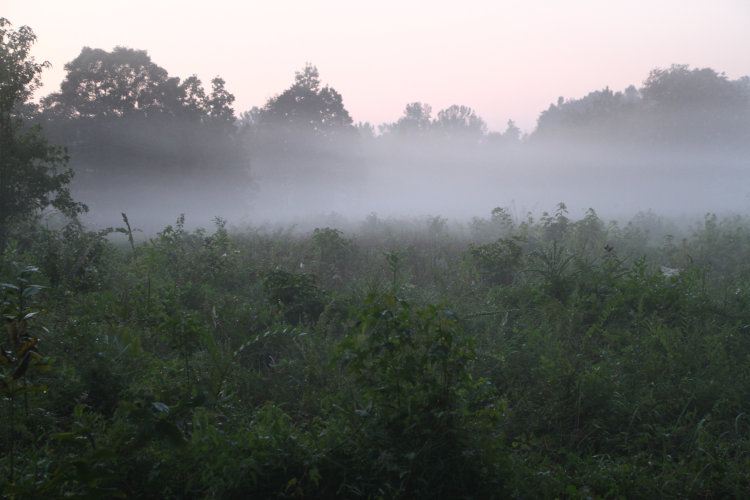
Very specific areas, to be honest; while the fog could be seen to extend to the plants right in front of us, an adjacent field on the other side of a narrow treeline showed none at all, though still plenty of dew. My guess is somehow, the faintly different weeds and undergrowth within that field contained or produced slightly more warmth – either that or the surrounding trees were closer and kept the faint breeze from dissipating the heat from the previous day. This did mean that we backtracked to the first field above right as the sun was rising, because of course.
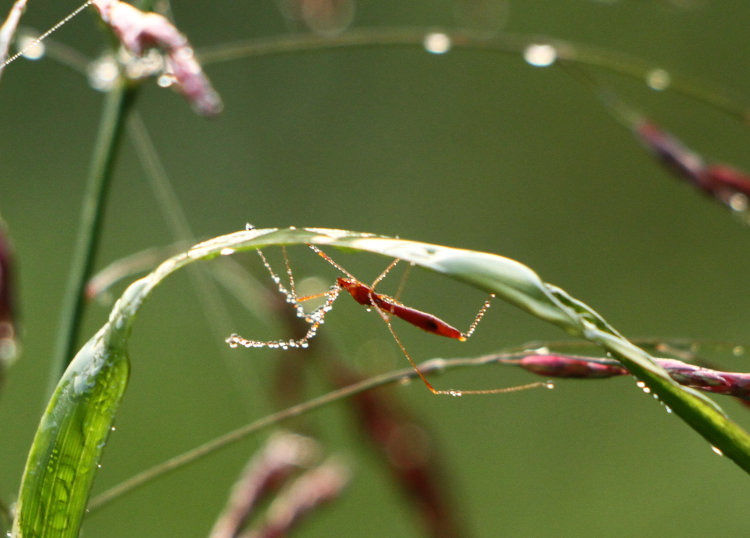
This may or may not be a variety of rice bug (Genus Stenocoris) – I’d found one in the same location (well, not exactly, but within a few hundred meters) once before, though I didn’t potentially identify it until later, and didn’t collect one either time to do precise identification – it’s just here to illustrate the conditions. Mostly, however, it was the spiderwebs that served that purpose.
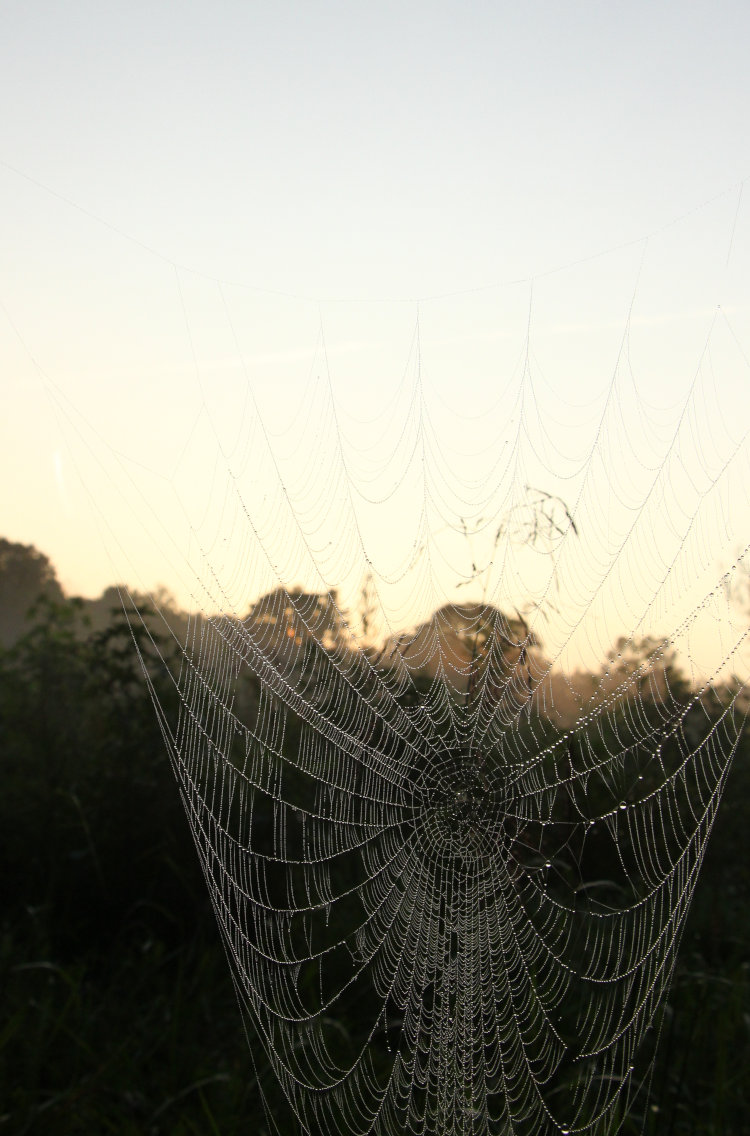
We’re going to see more of these, because there wasn’t a lot else to shoot, and you’ve already seen a partridge pea which made up a lot of the landscape. Yet we were there in part for the sun, and it did arrive.
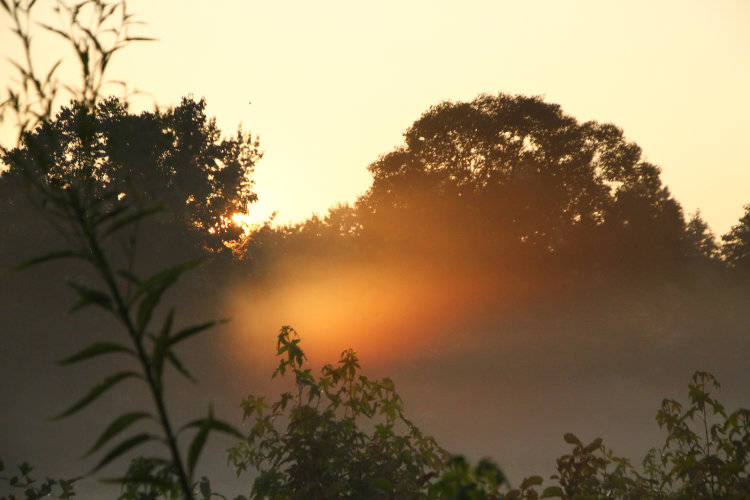
Due to the proximity of the trees, this was distinctly after ‘astronomical sunrise,’ but then again, that’s the case virtually everywhere but on the ocean – things stick up of the ground, even the ground, routinely. In this case though, the trees created their own ‘atmospheric’ effects of crepuscular rays, only very local ones instead of being many kilometers away when caused by clouds or even mountains, and the fog made these supremely visible. There was even a hint of rainbow diffraction, but the camera didn’t capture the subtle blue edges well at all. I’ll remember to play with White Balance the next time I witness this, and see if that works to capture more of the range of colors.
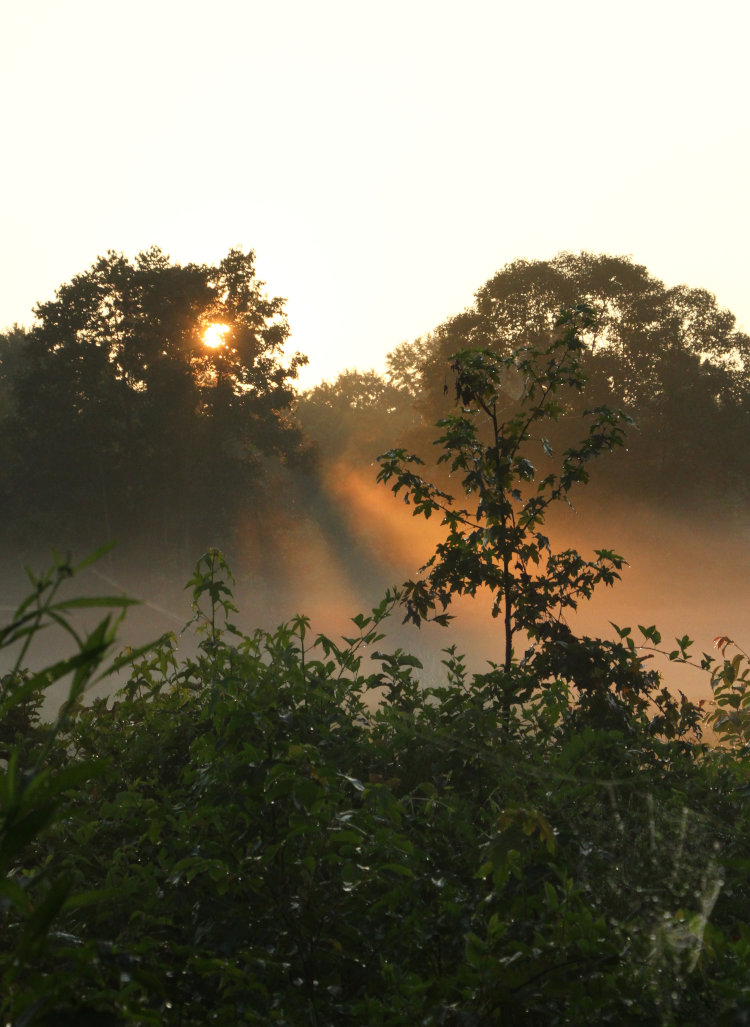
The rays were so localized that you could walk a few steps and see them shift around you, though it was dispersing the fog faster than the sun was rising high enough to reach most of the weeds and thus the webs that appeared every couple of meters – dew is really good about revealing how many spiders there are in any given location.
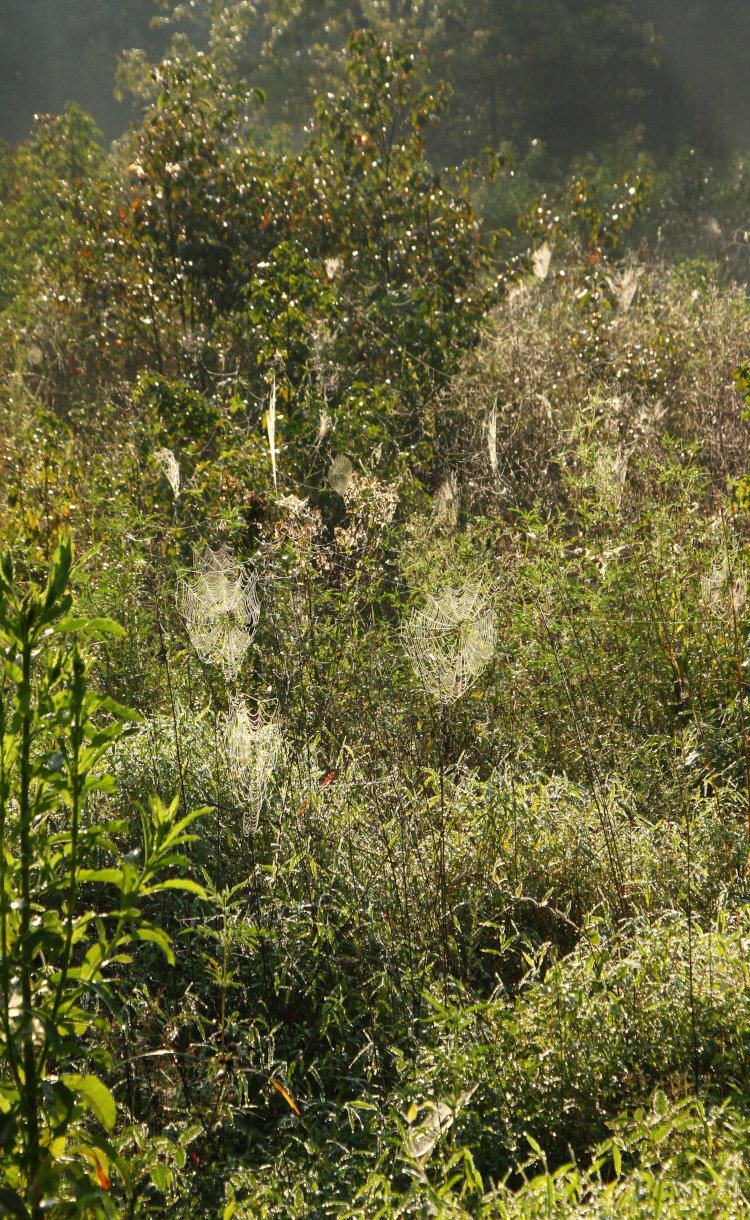
Just, you know, a couple, here and there…
I occasionally played around with being fartsy, but didn’t find a lot of compositions with potential – too much background clutter, of course, and a lot of the better-looking webs were deeper in the undergrowth, requiring slogging through the waist-high soaking weeds and no small number of thorny bushes, and my heart wasn’t in it that morning. But I still managed a couple.
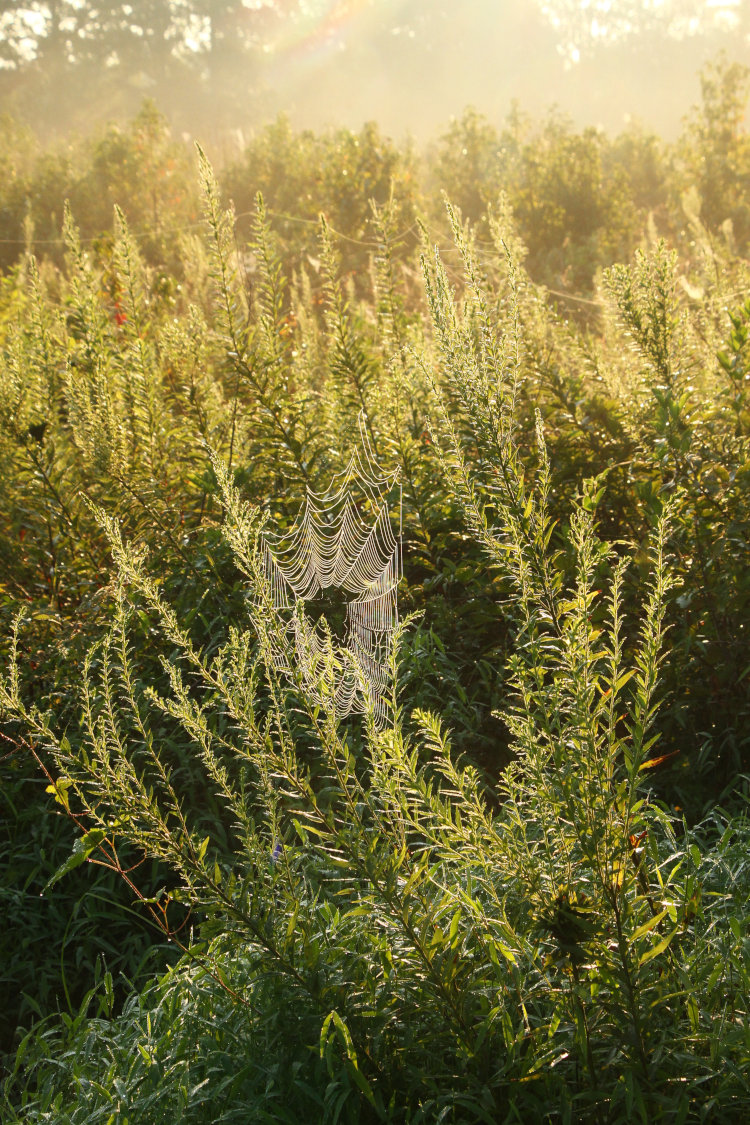
Mason Farm is a long loop, and so this leg showed webs that were primarily backlit by the rising sun – for reasons unknown, there weren’t as many webs, and not as much dew, on the other side of the trail where the sun would have been at our backs. Also, we had to look hard to find webs that even seemed occupied, and while I can easily believe the spiders abandoned the webs when the dew made insect capture nearly impossible, I also wasn’t finding them in their typical daytime hiding spots, at the upper anchor points for the web itself on the weeds and trees. But a couple were occupied.
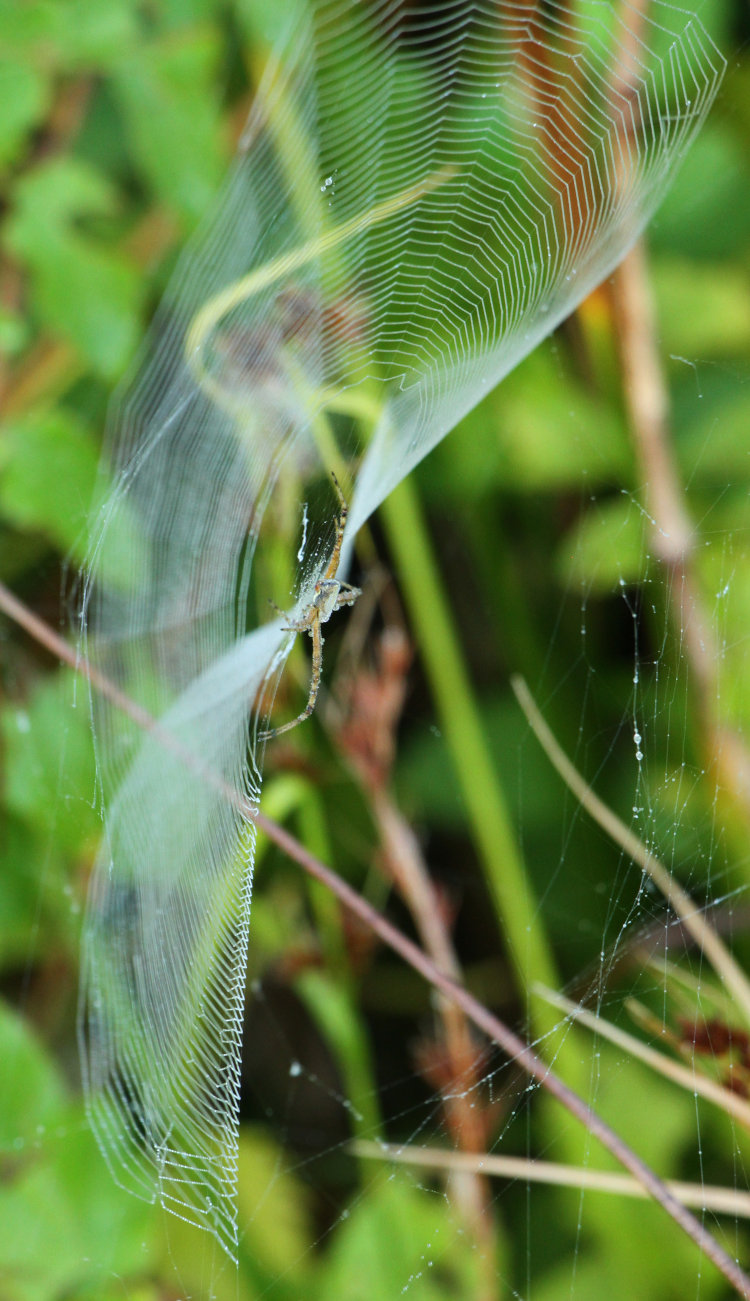
At times, some of the cooler webs could be reached without too much difficulty, and since this one was both dynamically-shaped and occupied, I made the effort here. But we need a closer look at that maker:
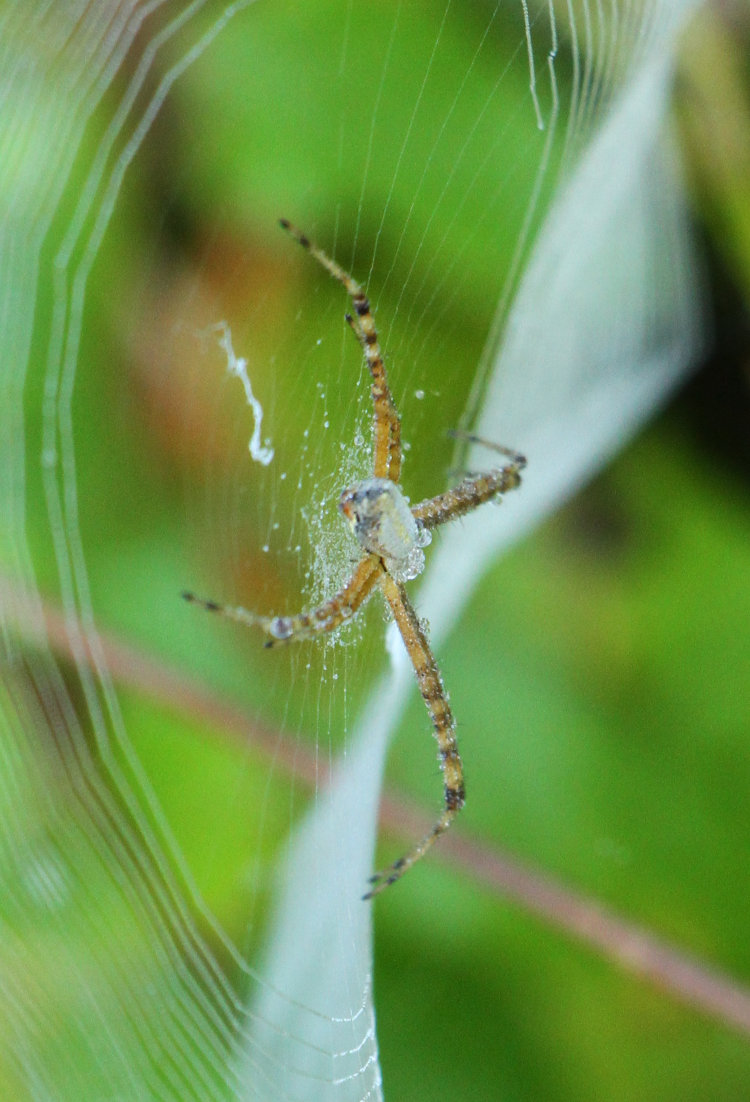
While far from the size of some spiders to be found, this one was still large enough to be more than a little bead in the center of the web. I suspect this is an immature banded argiope (Argiope trifasciata,) but due to surrounding weeds, I didn’t get a good dorsal view, plus I wanted the dew anyway, and a dorsal view would have eradicated the shape of the web.
About halfway along the loop, the trails enters a forested section which has even fewer photo opportunities, but does have a section of boardwalk that passes through a boggy region. Mr Bugg asked if beavers would be in the area, and I was initially skeptical based on it being little more than swampland, but then immediately spotted some telltale sheared off saplings, though definitely not from this year. Only a minute later, we found a small tree fallen across the boardwalk.
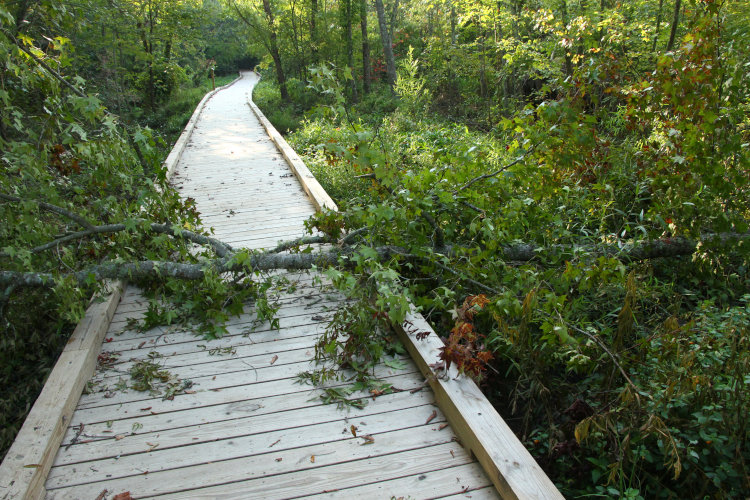
I have to say that there were trees down everywhere, though all but this one that had crossed the trail had been cut away by maintenance crews – storms had done their share of dropping old trees within the Reserve. This one, however, was not the victim of a storm:
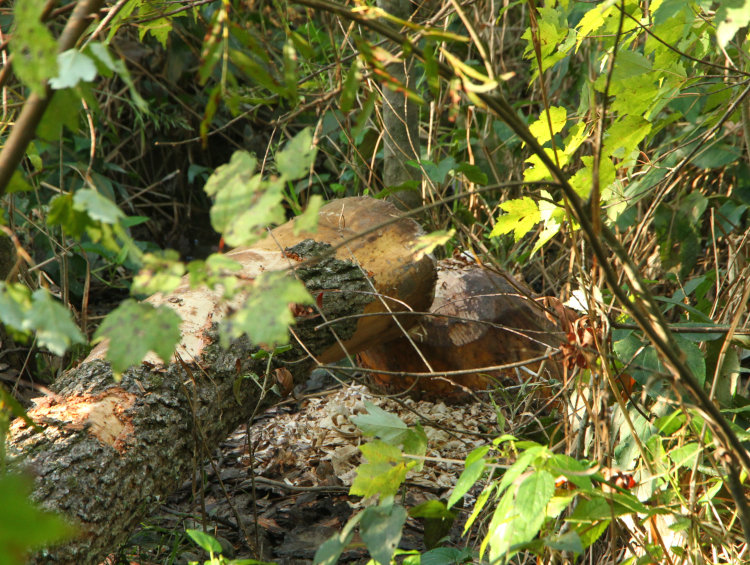
Clearly beaver work, and you can see some of the bark stripped from the trunk – beavers eat the bark, leaves, and smaller branches of select trees, in this case an American sweetgum (Liquidamber styraciflua.) I would judge this fall was, at most, two days old. Mason Farm is not open at night so hanging out to try and see the beavers isn’t an option here.
Out on the other side of the loop, we could now find some webs with the sun at our backs, still laden with dew, and I could do a short video clip of the diffraction from the drops, exactly the same as how rainbows appear, though I could change position easier:
It only occurred to me as I was prepping this video for upload that I could have experimented a little, moving up and down as well, and even in a circle, to demonstrate the effect more, but maybe next time.
And finally, a small collection of colorful porcelain berries (Ampelopsis brevipedunculata,) which I specifically looked for because they only seem to grow in one particular section of the Reserve.
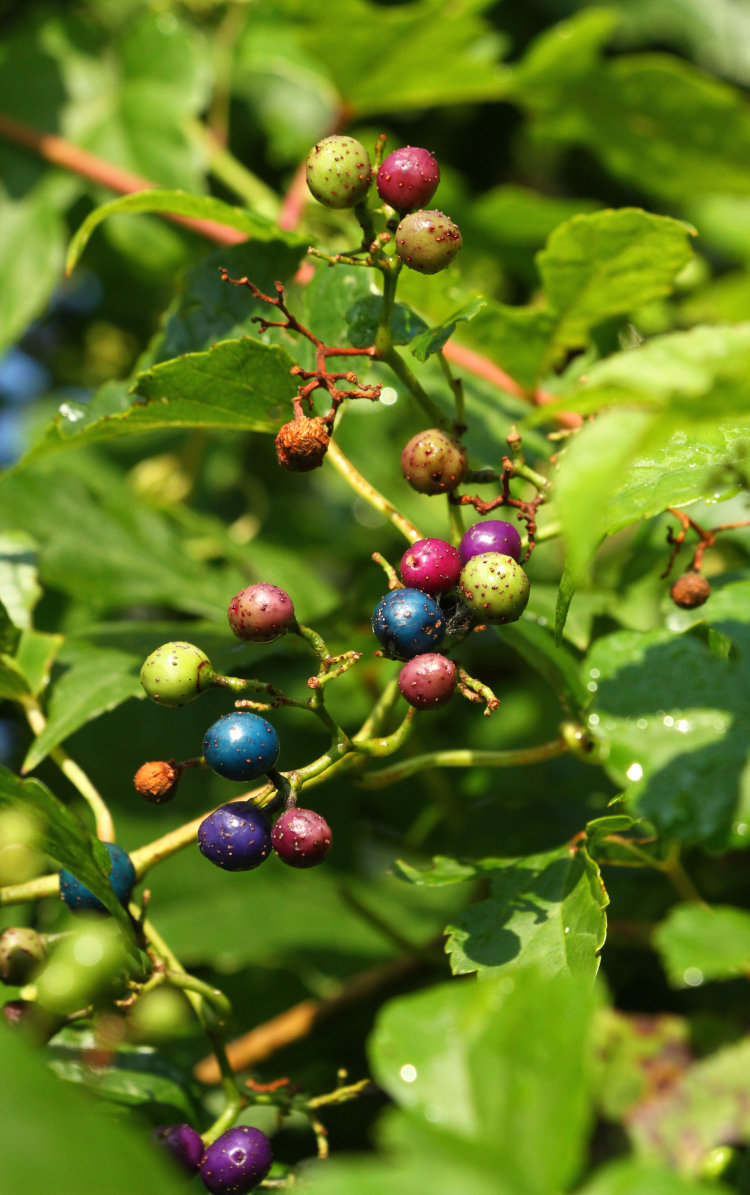
These are not native to the US and I believe they’re considered invasive, but they don’t seem to be trying to spread from this spot at least – I might have to try and establish some at Walkabout Estates, because they’re a nice splash of color, and blues that usually aren’t found too often.
Overall, however, that was about it – no birds, no mantids, no turtles, and very few flowers. Just dew and fog. We’ve had better outings to the same location, but that’s the way it goes most of the time with nature photography anyway – you can’t count on conditions or subjects, and some days they just aren’t available. And another time, you shoot hundreds of frames in the same locale. You take it as it comes.



















































